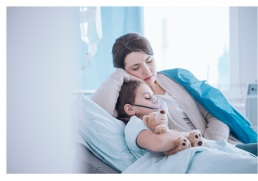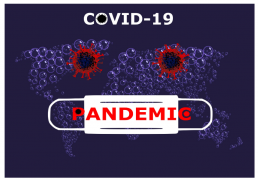COVID and Children
MIS-C stands for multi-system inflammatory syndrome. Per the CDC it is a rare but severe condition that is reported around 2 to 4 weeks after the onset of COVID-19 in children and adolescents.
The condition is serious as the features include shock (with cardiac involvement), GI symptoms and significantly elevated markers of inflammation. Inflammation may include the heart, lungs, kidneys, brain, skin, eyes and GI organs. Symptoms may also include a prolonged fever, rash, and evidence of COVID. Per the CDC the cause of MIS-C is unknown, however many children that had MIS-C tested positive for COVID-19.
Parents and clinicians should keep an eye on all children diagnosed or having symptoms of COVID, as MIS-C may not appear until weeks after being infected.
In April 2020 a cluster of children in Europe were reported to have hyperinflammatory shock with features similar to Kawasaki disease and toxic shock syndrome. As of July 29, 2020, there were a total of 570 MIS-C cases reported to the state health departments. Out of the 570 patients 10 patients were reported to have died.
In addition, based on an analysis published by the CDC, the cumulative rate of COVID-19 associated hospitalizations among children (8 per 100,0000) has been low compared to adults (164.5). However, one in three hospitalized children were admitted to an intensive care unit.
This new emerging data means children are not immune to COVID-19. Caution should be taken not only with adults and children with underlying conditions, but everyone of all ages, regardless of underlying conditions. Call your provider if you come in contact with anyone with COVID or develop any symptoms.
References:
- https://www.cdc.gov/coronavirus/2019-ncov/daily-life-coping/children/mis-c.html. Accessed on August 11, 2020
- https://www.cdc.gov/mmwr/volumes/69/wr/mm6932e2.htm. Accessed on August 11, 2020
- https://www.cdc.gov/mmwr/volumes/69/wr/mm6932e3.htm?s Accessed on August 11, 2020
What to Know About COVID-19
What is COVID-19?
COVID-19 is a disease that is transmitted by respiratory secretions. It is a novel, or new, strand of the coronavirus. COVID-19 is from the same family of MERS and SARS and thought to have originated as an animal coronavirus that infected people and then spread from people to people.
SARS-COV-2, which is a betacoronavirus, is the virus that causes COVID-19. COVID-19 is abbreviated for coronavirus disease 2019.
The disease classification has changed from an outbreak to epidemic to now a pandemic. The differences are how fast and quickly it can spread across a region. It is a world pandemic and as of today has spread to every continent except Antarctica. Because there is little to no immunity the virus is able to spread worldwide.
How is it transmitted?
COVID-19 is a respiratory infection that can be transmitted from respiratory droplets of infected people who cough or sneeze. Therefore, the CDC recommends people to stay at least 6 feet away from each other and not in direct contact. Some people may spread the virus prior to feeling symptoms. Additional ways of contracting the virus is from touching the surface or object that may have the virus and then touching your own mouth, nose or eyes.
Who is most at risk?
Since this virus is new, everyone is considered at risk. There are certain populations that are considered higher risk than others. This includes the elderly, infants, immunocompromised patients and anyone with an underlying condition, such as asthma or diabetes. This is a large population and it is important to be aware of the symptoms.
What are symptoms of COVID-19?
It may take days until symptoms do occur, anywhere from 2 to 14 days after exposure. Symptoms include a fever, dry cough, and itchy throat. Severe cases include difficulty breathing, requiring a respirator to help them breath. Call your doctor immediately if you think you have been exposed to COVID-19 and develop symptoms. The CDC states that emergency symptoms include: difficulty breathing or shortness of breath, persistent pain or pressure in the chest, new confusion or inability to arouse and bluish lips or face. Immediately seek medical help by calling your doctor if you think you have been exposed and are experiencing symptoms.

